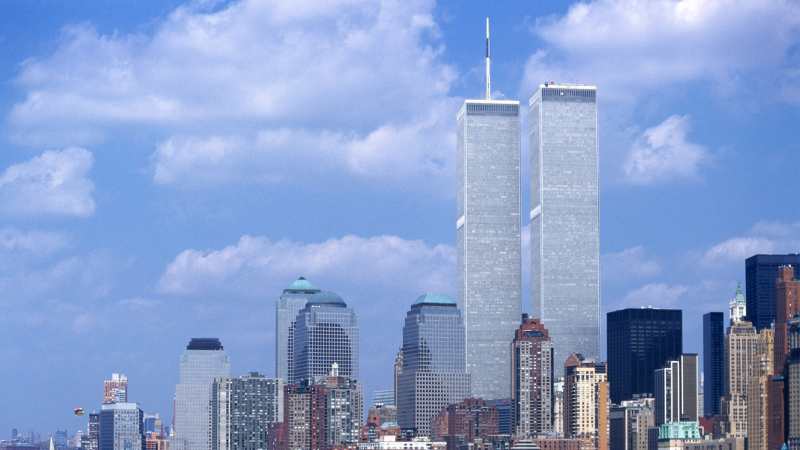(SQAUK) — On the morning of July 28, 1945, the iconic Empire State Building, a symbol of American ingenuity and architectural prowess, faced an unprecedented challenge. A B-25 Mitchell bomber, shrouded in thick fog, crashed into the 79th floor of the building, leaving only a tiny hole in its facade. This incident, while significant, pales in comparison to the tragic events of September 11, 2001, when the World Trade Center towers collapsed devastatingly after being struck by hijacked commercial airliners. The stark differences between these two incidents provide a striking commentary on architectural resilience and the evolution of structural engineering.
The 1945 Empire State Building incident
In the final months of World War II, a B-25 bomber piloted by Lieutenant Colonel William Franklin Smith Jr. was en route to Newark Airport. Due to heavy fog and navigational errors, the aircraft collided with the north side of the Empire State Building at approximately 9:40 a.m. The impact was catastrophic, resulting in the deaths of 14 people, including the crew and building occupants.
Despite the severity of the crash, the damage to the building was surprisingly contained. The bomber, traveling at about 200 miles per hour, tore a small, jagged hole into the facade, primarily affecting the 78th and 79th floors. The building’s robust construction, characterized by its steel framework and masonry, absorbed the impact and prevented a more extensive collapse. Remarkably, the Empire State Building was reopened just two days after the crash, a testament to its resilience and the engineering of the era.
The tragic collapse of the World Trade Center

On September 11, 2001, terrorists hijacked two BoeinOn September 11, 2001, two Boeing 767 aircraft were crashed into the North and South Towers of the World Trade Center. The impact caused massive fires fueled by thousands of gallons of jet fuel. Unlike the Empire State Building, which has a different structural system, the World Trade Center towers, designed in the late 1960s, used an innovative tube-frame design, providing an open floor plan. However, this design proved to be vulnerable to the extreme conditions created by the crashes.
The North Tower (WTC 1) was struck at 8:46 a.m., and the South Tower (WTC 2) at 9:03 a.m. Within hours, both towers collapsed at near free-fall speed, reducing the once-majestic structures to rubble and taking the lives of nearly 3,000 people. The intense heat from the fires weakened the steel framework, causing the floors to collapse one after the other. Later that day, World Trade Center 7, a 47-story building adjacent to the Twin Towers, collapsed due to extensive fire damage and structural failure.
Comparing the incidents
The differing outcomes of these two tragic events highlight several critical factors in building resilience and structural integrity:
- Construction Materials and Methods: The Empire State Building’s steel and masonry construction provided robust resistance to the impact, whereas the lightweight steel and glass design of the World Trade Center, though innovative, could not withstand the combined effects of impact and fire.
- Fireproofing and Safety Standards: Over the decades, advances in fireproofing and building codes also played a role. The Empire State Building’s fireproofing, though primitive by today’s standards, proved effective. In contrast, the impact compromised the fireproofing in the World Trade Center, leading to rapid structural failure.
- Impact Dynamics: The speeds and masses of the aircraft involved were significantly different. The B-25 bomber, much smaller and slower than the commercial jets used on 9/11, imparted less kinetic energy to the Empire State Building.
Reflections on resilience and tragedy
The collision between a B-25 bomber and the Empire State Building is a historical footnote, showcasing resilience in the face of disaster. In contrast, the collapse of the World Trade Center towers on September 11, 2001, stands as a profound tragedy that reshaped global geopolitics and underscored vulnerabilities in modern skyscraper design.
(Ad) Get the new book Hidden Axis: Forces Beyond the Visible World – Uncover the secrets they don’t want you to know. Dive into the truth about cosmic forces, government conspiracies, and humanity’s future.
Recent events highlight the crucial advancements in structural engineering, fireproofing, and emergency response procedures. As we construct taller and more intricate buildings, it’s essential to remember the lessons from these incidents, emphasizing the importance of resilience and preparedness in dealing with unexpected challenges.
Related video:


